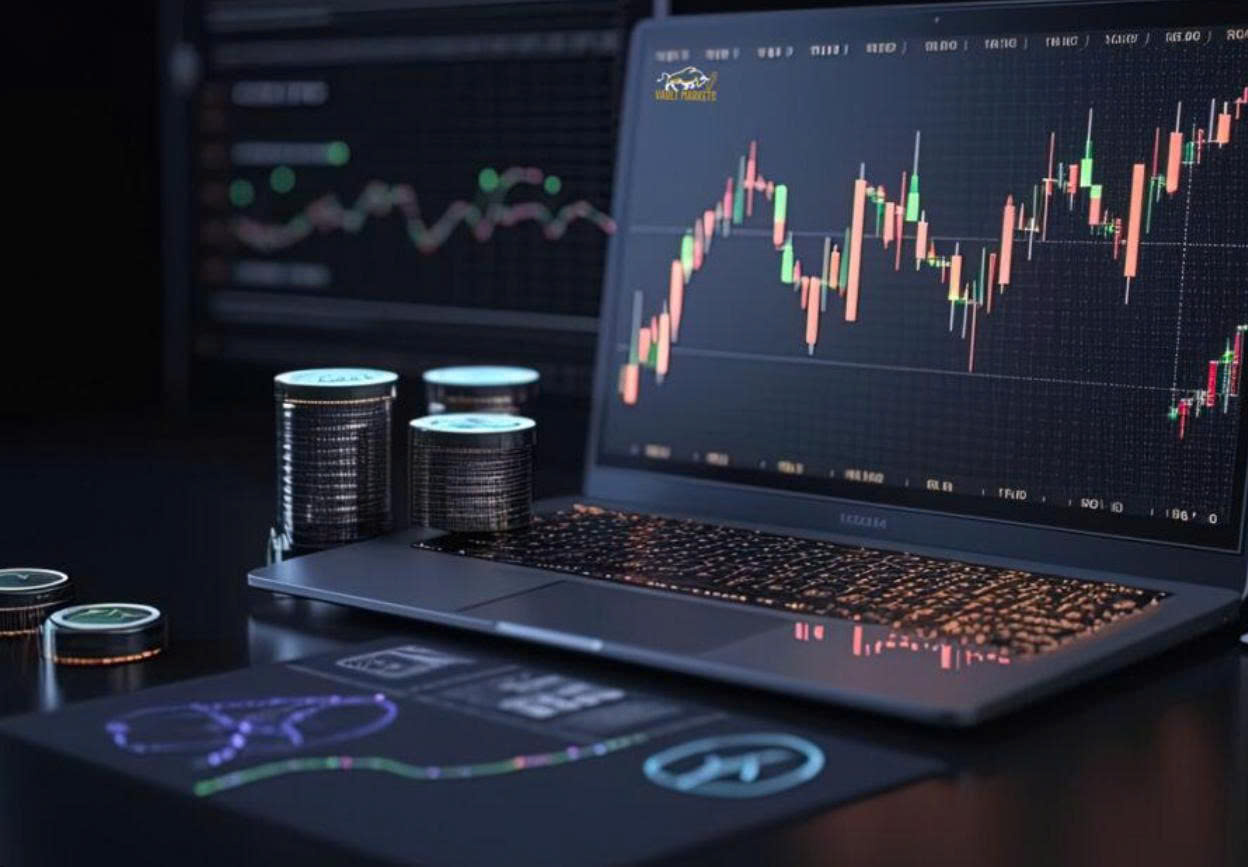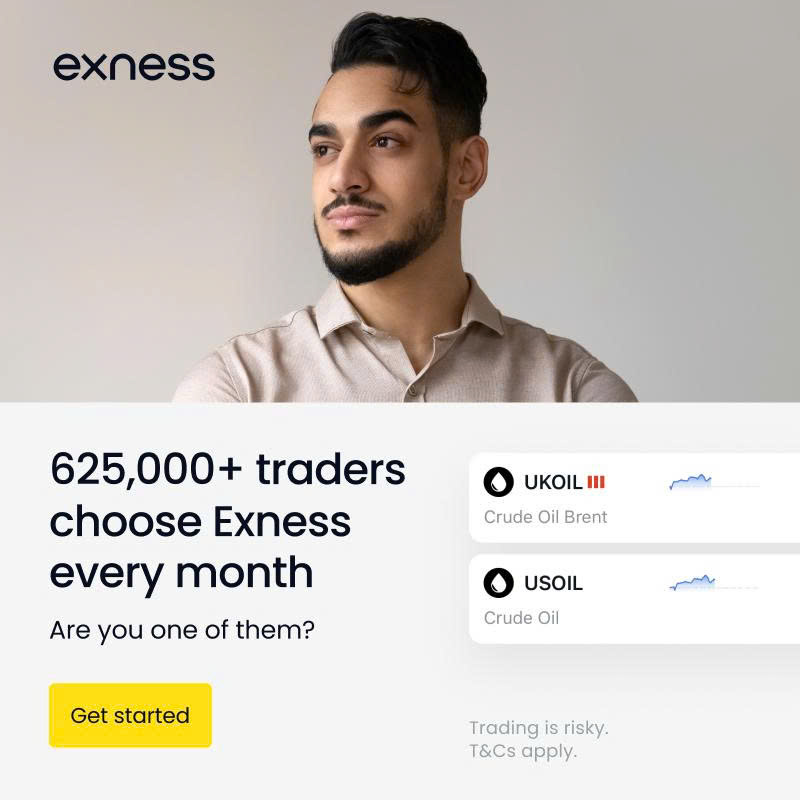
9 minute read
How to Trade in Forex from India: A Comprehensive Guide for Beginners
from Exness
by Exness Blog
The forex market, also known as the foreign exchange market, is the largest and most liquid financial market in the world, with a daily trading volume exceeding $7 trillion. For Indian investors, forex trading offers an exciting opportunity to diversify portfolios and potentially generate profits by trading global currencies. However, navigating the forex market from India comes with unique challenges due to regulatory restrictions and market complexities.
Top 4 Best Forex Brokers in India
1️⃣ Exness: Open An Account or Visit Brokers 🏆
2️⃣ XM: Open An Account or Visit Brokers 💥
3️⃣ JustMarkets: Open An Account or Visit Brokers ✅
4️⃣ Quotex: Open An Account or Visit Brokers 🌐
In this comprehensive guide, we’ll walk you through everything you need to know about forex trading in India, from understanding the basics to choosing the right broker, complying with regulations, and developing effective trading strategies. Whether you’re a beginner or an aspiring trader, this article will equip you with the knowledge to start your forex trading journey confidently.
What is Forex Trading?
Forex trading involves buying and selling currencies to profit from fluctuations in their exchange rates. For example, if you believe the US dollar (USD) will strengthen against the Indian rupee (INR), you might buy USD/INR, aiming to sell it later at a higher rate. The forex market operates 24/5, allowing traders to participate at any time during the trading week.
In India, forex trading is regulated by the Reserve Bank of India (RBI) and the Securities and Exchange Board of India (SEBI). While Indian residents are allowed to trade forex, there are strict guidelines to follow, which we’ll explore in detail.
Why Trade Forex from India?
· High Liquidity: The forex market’s massive trading volume ensures you can enter and exit trades quickly.
· Accessibility: With a computer or smartphone and an internet connection, anyone in India can start trading forex.
· Diverse Opportunities: Trade major currency pairs like USD/INR, EUR/INR, or GBP/INR, and take advantage of global economic trends.
· Leverage: Forex brokers often offer leverage, allowing traders to control larger positions with smaller capital (though this comes with risks).
Is Forex Trading Legal in India?
Yes, forex trading is legal in India, but it’s heavily regulated. The RBI and SEBI have set specific rules to protect investors and maintain financial stability. Here’s what you need to know:
· Currency Pairs: Indian residents can only trade currency pairs involving the INR, such as USD/INR, EUR/INR, GBP/INR, and JPY/INR. Trading non-INR pairs (e.g., EUR/USD) is not permitted for retail traders.
· Regulated Exchanges: Forex trading must be conducted through SEBI-regulated brokers or exchanges like the National Stock Exchange (NSE), Bombay Stock Exchange (BSE), or Metropolitan Stock Exchange (MSE).
· No OTC Trading: Over-the-counter (OTC) forex trading, common in other countries, is not allowed in India.
· FEMA Compliance: The Foreign Exchange Management Act (FEMA) governs forex transactions, and traders must comply with its rules to avoid penalties.
To trade legally, always choose a SEBI-regulated broker or platform. Unauthorized brokers may expose you to legal risks and potential scams.
Step-by-Step Guide to Start Forex Trading in India
Step 1: Understand the Basics of Forex Trading
Before diving in, familiarize yourself with key forex terms:
· Pip: The smallest price movement in a currency pair (e.g., 0.0001 for most pairs).
· Lot: A standardized unit of trading (e.g., a standard lot is 100,000 units of the base currency).
· Leverage: Borrowed funds provided by brokers to amplify trading positions.
· Margin: The amount of money required to open a leveraged position.
· Spread: The difference between the bid and ask price of a currency pair.
Learning these concepts will help you understand market dynamics and make informed trading decisions.
Step 2: Educate Yourself
Forex trading requires knowledge of global economics, technical analysis, and risk management. Here are some ways to build your skills:
· Online Courses: Platforms like Coursera, Udemy, or Babypips offer free and paid forex trading courses.
· Books: Read classics like Currency Trading for Dummies or The Little Book of Currency Trading to grasp core concepts.
· Webinars and YouTube: Follow reputable forex educators for real-time insights and strategies.
· Demo Accounts: Practice trading with virtual money to test strategies without risking real funds.
Step 3: Choose a SEBI-Regulated Broker
Selecting a reliable broker is critical for successful forex trading in India. Here’s what to look for:
· Regulation: Ensure the broker is registered with SEBI and operates on NSE, BSE, or MSE.
· Trading Platform: Choose a broker offering user-friendly platforms like MetaTrader 4 (MT4) or MetaTrader 5 (MT5).
· Fees and Spreads: Compare transaction costs, spreads, and commissions to minimize trading expenses.
· Customer Support: Opt for a broker with responsive support, preferably in Hindi or other regional languages.
· Leverage and Margin: Check the leverage offered, but use it cautiously to avoid significant losses.
Popular SEBI-regulated brokers in India include Zerodha, Angel Broking, and ICICI Direct. Always verify the broker’s credentials before opening an account.
Step 4: Open a Forex Trading Account
Once you’ve chosen a broker, follow these steps to open an account:
· Submit KYC Documents: Provide identity proof (Aadhaar, PAN card), address proof, and bank details as per RBI guidelines.
· Fund Your Account: Deposit funds in INR, as foreign currency accounts are not permitted for retail forex trading in India.
· Choose a Trading Platform: Download the broker’s trading platform or use their web-based interface.
· Verify Account: Complete the verification process to activate your trading account.
Step 5: Develop a Trading Plan
A solid trading plan is essential for consistent success. Your plan should include:
· Goals: Define whether you’re trading for short-term gains or long-term wealth creation.
· Risk Management: Decide how much capital you’re willing to risk per trade (typically 1-2% of your account balance).
· Trading Strategy: Choose a strategy that suits your risk tolerance, such as scalping, day trading, or swing trading.
· Analysis: Use technical analysis (charts, indicators) and fundamental analysis (economic news, RBI policies) to make decisions.
Step 6: Start Trading with a Demo Account
Before risking real money, practice with a demo account. Most SEBI-regulated brokers offer demo accounts with virtual funds. This allows you to:
· Test your trading strategies in a risk-free environment.
· Familiarize yourself with the trading platform.
· Build confidence in analyzing currency pairs like USD/INR or EUR/INR.
Step 7: Trade with Real Money
Once you’re confident, start trading with real funds. Begin with a small investment to minimize risks. Focus on INR-based currency pairs and monitor economic events like RBI interest rate decisions or US Federal Reserve announcements, as they can impact exchange rates.

💥 Trade with Exness now: Open An Account or Visit Brokers 🏆
Best Forex Trading Strategies for Indian Traders
To succeed in forex trading, you need a strategy tailored to your goals and market conditions. Here are three beginner-friendly strategies:
1. Trend Following
This strategy involves identifying and trading in the direction of a currency pair’s trend. For example:
· Use indicators like Moving Averages or the Relative Strength Index (RSI) to spot trends.
· If USD/INR is in an uptrend (USD strengthening against INR), buy the pair.
· Set stop-loss orders to limit losses if the trend reverses.
2. Range Trading
When a currency pair like EUR/INR is moving sideways within a range, you can buy at support levels and sell at resistance levels. Use tools like Bollinger Bands to identify these levels.
3. News Trading
Economic events, such as RBI policy announcements or US inflation data, can cause significant price movements. Monitor the economic calendar and trade based on news-driven volatility. However, be cautious, as news trading can be risky for beginners.
Risk Management Tips for Forex Trading in India
Forex trading carries significant risks, especially with leverage. Here’s how to protect your capital:
· Use Stop-Loss Orders: Automatically exit a trade if the market moves against you.
· Limit Leverage: While leverage can amplify profits, it also magnifies losses. Stick to low leverage ratios (e.g., 10:1 or 20:1).
· Diversify: Don’t put all your capital into a single trade or currency pair.
· Avoid Emotional Trading: Stick to your trading plan and avoid impulsive decisions driven by fear or greed.
· Keep Learning: Stay updated on global economic trends and RBI regulations to make informed decisions.
Common Mistakes to Avoid
· Trading Without a Plan: Entering trades without a strategy often leads to losses.
· Overleveraging: Using excessive leverage can wipe out your account during volatile periods.
· Ignoring Regulations: Trading with unregulated brokers violates RBI rules and risks penalties.
· Chasing Losses: Trying to recover losses by taking bigger risks can lead to further losses.
· Neglecting Risk Management: Failing to use stop-loss orders or risk limits can result in significant financial setbacks.
Tools and Resources for Indian Forex Traders
To enhance your trading experience, leverage these tools and resources:
· Economic Calendar: Websites like Investing.com or ForexFactory provide calendars to track global economic events.
· Charting Platforms: Use MetaTrader 4/5 or TradingView for technical analysis.
· News Sources: Follow RBI announcements, Bloomberg, or Reuters for market updates.
· Trading Communities: Join Indian forex trading forums or Telegram groups to learn from experienced traders.
Tax Implications of Forex Trading in India
Profits from forex trading in India are considered business income or capital gains, depending on the nature of your trading:
· Business Income: If you trade frequently, profits are taxed as business income based on your income tax slab.
· Capital Gains: If you hold positions for longer periods, profits may be treated as short-term or long-term capital gains.
· TDS: Brokers may deduct Tax Deducted at Source (TDS) on profits, so maintain accurate records for tax filing.
Consult a chartered accountant to ensure compliance with Indian tax laws.
Challenges of Forex Trading in India
While forex trading offers opportunities, Indian traders face unique challenges:
· Limited Currency Pairs: Restrictions on non-INR pairs limit trading options.
· Regulatory Compliance: Strict RBI and SEBI rules require careful adherence.
· Market Volatility: Currency pairs like USD/INR can be volatile due to global economic events.
· Broker Limitations: Fewer SEBI-regulated brokers offer forex trading compared to stock trading.
How to Stay Updated with Forex Market Trends
To succeed, stay informed about factors affecting currency markets:
· RBI Policies: Monitor interest rate decisions and forex reserve updates.
· Global Events: Track US Federal Reserve policies, geopolitical events, and economic data releases.
· Technical Analysis: Regularly analyze charts to identify trends and patterns.
· X Platform: Follow credible forex traders and analysts on X for real-time insights (avoid unverified sources).
Conclusion: Start Your Forex Trading Journey in India
Forex trading in India is an exciting way to participate in global financial markets, but it requires careful planning, education, and discipline. By choosing a SEBI-regulated broker, developing a solid trading plan, and practicing risk management, you can navigate the forex market with confidence. Start with a demo account, stay updated on regulations, and continuously improve your skills to achieve long-term success.
Read more:

